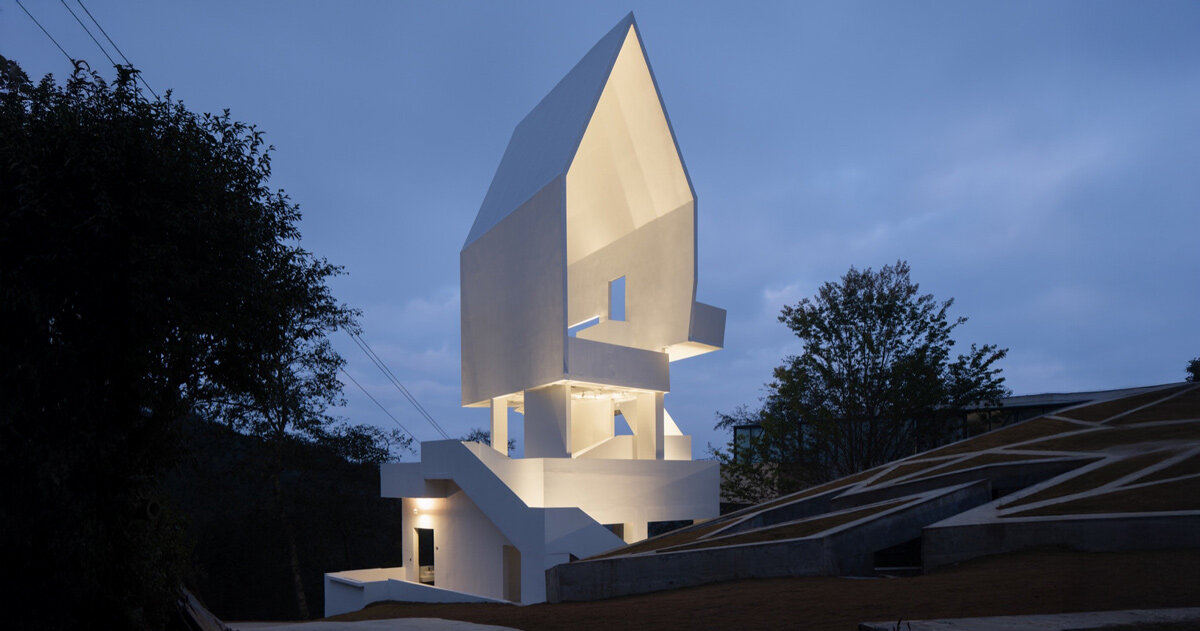Dali Wuliangshan Flying Bird Art Gallery
The Dali Wuliangshan Flying Bird Art Gallery, designed by Kong Xiangwei Studio, is located on Phoenix Mountain in Yunnan, China. Set within the northern foothills of the Wuliang Mountain National Nature Reserve, the gallery and observatory emerges at an elevation of 2,300 meters (7,545 feet) in a landscape known for its canyon terrain, warm air currents, and role as a vital migratory corridor for birds across East Asia.
The mountain has long hosted one of China’s most significant bird banding research sites. Over twenty-five years, more than 67,000 birds from 304 species have been tagged, building a detailed ecological archive of the East Asian-Australasian Flyway. This deep history of observation forms the cultural and ecological foundation for the new gallery.
Phoenix Mountain is also blanketed by an 87-hectare organic tea plantation, where terraces of greenery stretch across rolling slopes. Within this cultivated landscape, smart feeding stations and bird-watching hides already create a careful dialogue between humans and migratory life.
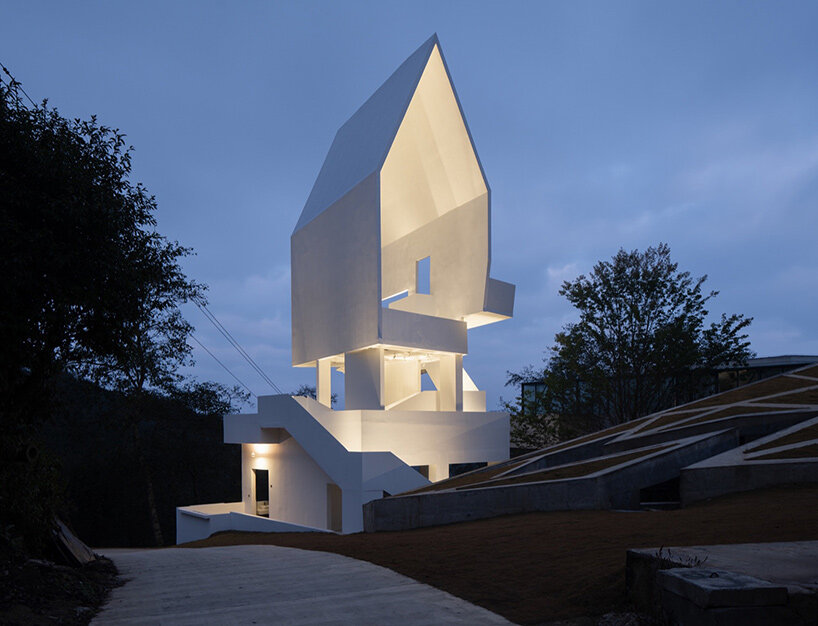
images © Kong Xiangwei Studio, Archi-Translator Photography
a light-touch intervention by Kong Xiangwei Studio
The project by Kong Xiangwei Studio arises within a courtyard complex that includes guesthouses and a single-story café. To establish a cultural center for the complex, the existing café was chosen as the base for the gallery. Its foundations allowed Kong Xiangwei Studio to insert a new architectural element while maintaining minimal impact on the existing structures.
The design adopts a principle of ‘light-touch intervention.’ A lightweight steel structure was placed above the original café, creating a new second floor. Its form, resembling outstretched wings, is immediately legible in the landscape. The sharply pointed apex and open span convey a sense of suspension, as though the building itself were caught mid-flight within the valley. This approach transforms the gallery into both a functional cultural space and a sculptural landmark.
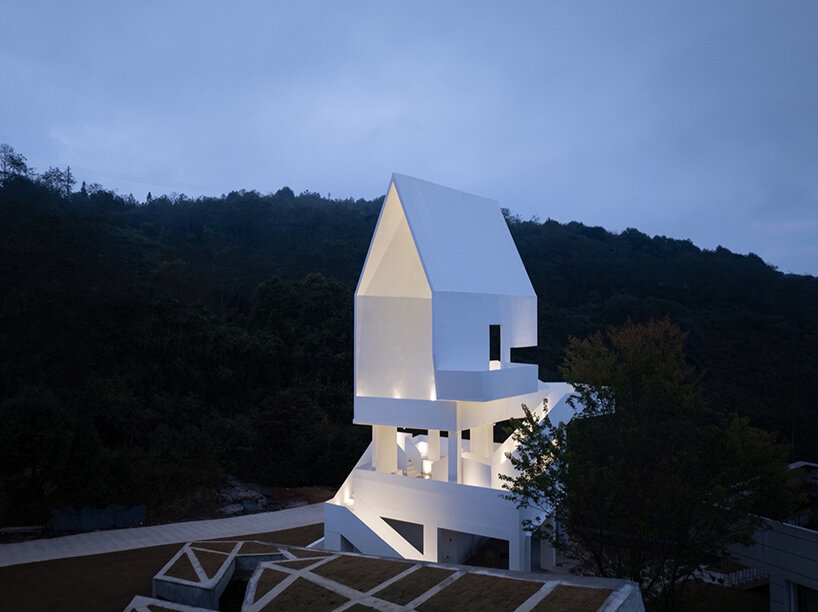
Kong Xiangwei Studio built the gallery above an existing café within a courtyard complex
inviting the tea gardens in
The ground floor of Kong Xiangwei Studio’s art gallery retains the café, while the upper level functions as the exhibition space. Here, transparency defines the architecture: expansive glazing dissolves boundaries, allowing the tea gardens, forests, and distant valleys to flow into the room. Photographs of migratory birds are displayed on freestanding walls, positioned so that visitors glimpse living birds in flight beyond the glass as they view the still images inside.
The central spatial feature is the pointed apex, supported by the steel frame and recessed to dramatic depth. It frames the valley in a single sweeping view, immersing visitors in the landscape. In sunlight, the white structure channels light into the gallery, while in fog, it softens into a diffused vessel of mist.
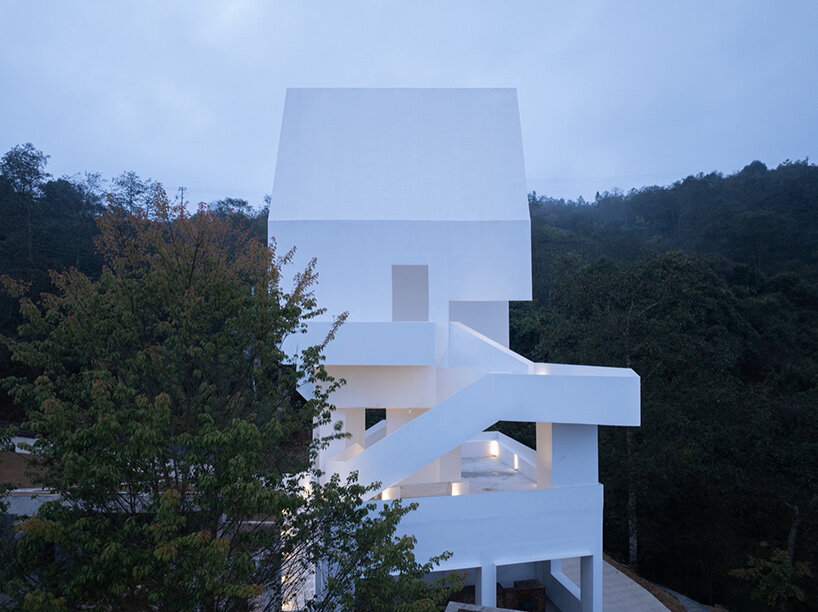
the lightweight steel structure resembles wings suspended over the valley
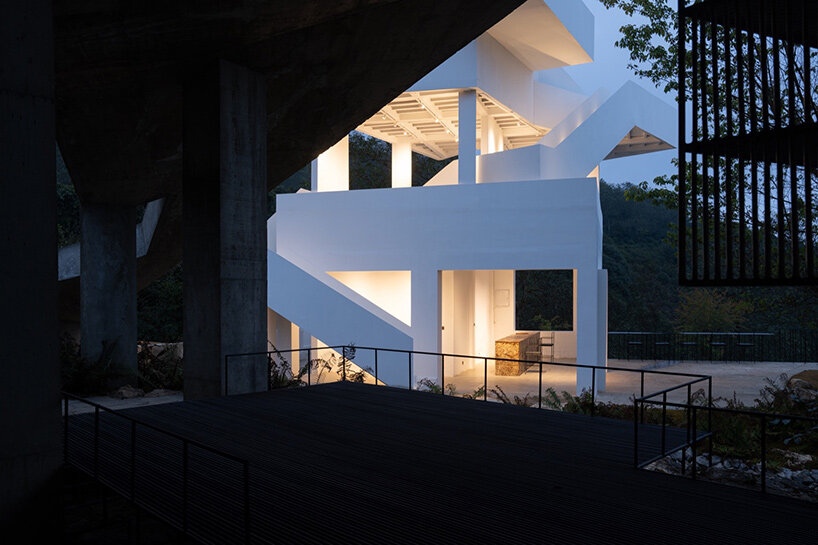
transparent glazing draws views of tea gardens and distant mountains into the interior
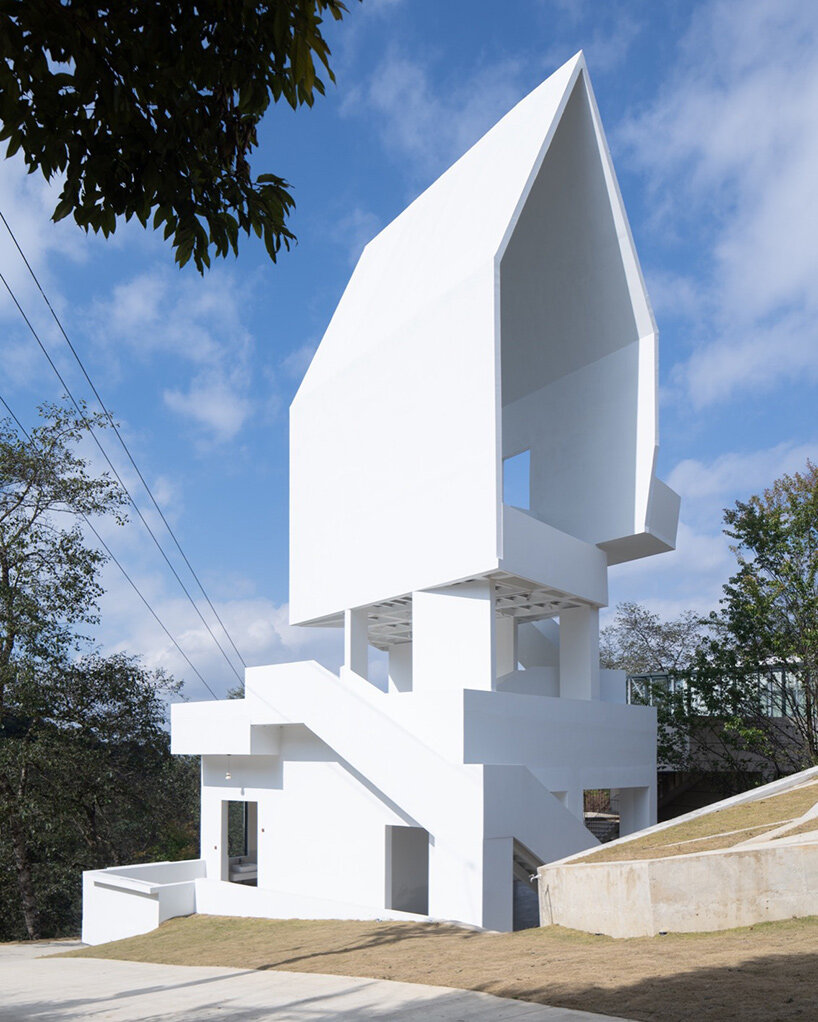
photographs of migratory birds are displayed on freestanding walls inside the gallery
